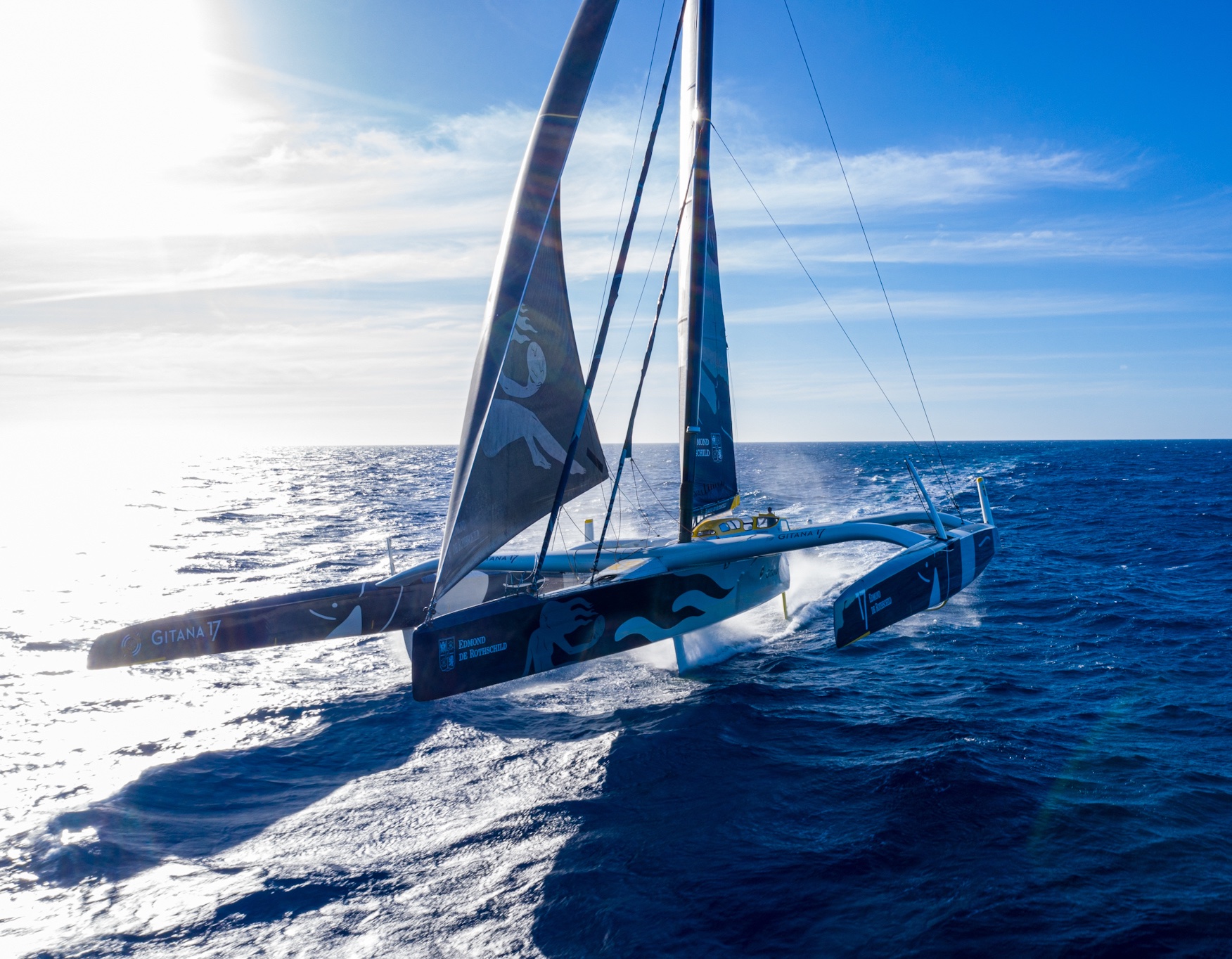

Spot on with their timing and at the helm of a giant at her full potential, the crew of the Maxi Edmond de Rothschild began their passage across the South Atlantic on Sunday evening after seven days at sea, bound for Good Hope, the first of three major capes in the Jules Verne Trophy. Since then, the flying maxi-trimaran has left the Brazilian coast in her wake, the miles simply flying by at very high speed. This afternoon, Franck Cammas, Charles Caudrelier and their four crew have entered the forties, latitudes known by sailors as roaring due to the boisterous conditions they provide for those who dare to venture into them. And it has to be said that the NW’ly breeze has fleshed out to above 30 knots now. And so the scene is set for the men of Gitana Team who are continuing on their record hunt, with their sights on their first crack at the record to Cape Agulhas, which they know to be within reach.

Together with their router Marcel van Triest, the Cammas-Caudrelier pairing has managed to pull off its first challenge on the oceanic chessboard. Indeed, by perfectly positioning itself under the Saint Helena High and ahead of a powerful front heading off on a tour of Antarctica, they’re opening their crew up to the fast track. In the last 24 hours, they’ve maintained an average speed of over 35 knots, enabling them to devour some 846 miles.
At the gateway to the Deep South
Since departing Ushant, the men of the Maxi Edmond de Rothschild have been experiencing a speeded-up version of all four seasons, fluctuating between the cold and the hot just a few hours apart at times. By diving down towards the Southern Ocean, the sailors know that living conditions aboard the boat are set to get tougher and they’re preparing for them. And that’s also why they really made the most of the sun and the excellent conditions for slipping along yesterday as they were making headway at over 30° south: “Yesterday, we had 24 fairly crazy hours. Benefiting from such sunny conditions at these latitudes together with flat seas, meant we were able to make headway at very high speed, ticking off over 800 miles over the course of the day. Incredible! I was lucky enough to enjoy it in two ways, which was a great adrenalin rush. We decided to fly the drone and during the same watch I enjoyed 40 minutes of exceptional helming. At times like those… there’s no doubt in our mind about why we came on this voyage!” stressed Yann Riou, before going on to describe the ambiance and life onboard, ahead of the low-pressure system: “we’re gradually changing our clothes. It’s not cold in the daytime yet, even though we like getting on our fleeces and getting into sleeping bags at night, but the atmosphere is clearly more humid now. As such, our foulies and boots are now part of our outfit on deck again. The advantage of this is that the transition towards the cold will be a gradual one, at least with regards their wardrobe.”
Since the start of this 10th day of the record attempt, the wind has fleshed out as forecast, accompanied by a short, cross sea, it too becoming heavier. This afternoon, the latest of the Gitanas was sailing in a good NW’ly breeze of thirty knots or so, but she was continuing to power along towards the tip of South Africa. With a lead of 792 miles over Francis Joyon’s record, the men of Gitana Team know that they are sailing at the right tempo, but they remain clear-headed and particularly focused: “Idec had an exceptional Indian Ocean with an ideal gybe-free course and a series of days where they covered more than 800 miles… We knew we had to make it to the tip of South Africa with a good lead in order to do battle with them on an even footing”, explained Franck Cammas.
As was the case in the Brest Atlantiques race a little over a year ago, the 32-metre giant will pass fairly close to the ‘lost’ islands of the South Atlantic, namely Tristan Da Cunha and its closest neighbour Gough Island.
Notifications